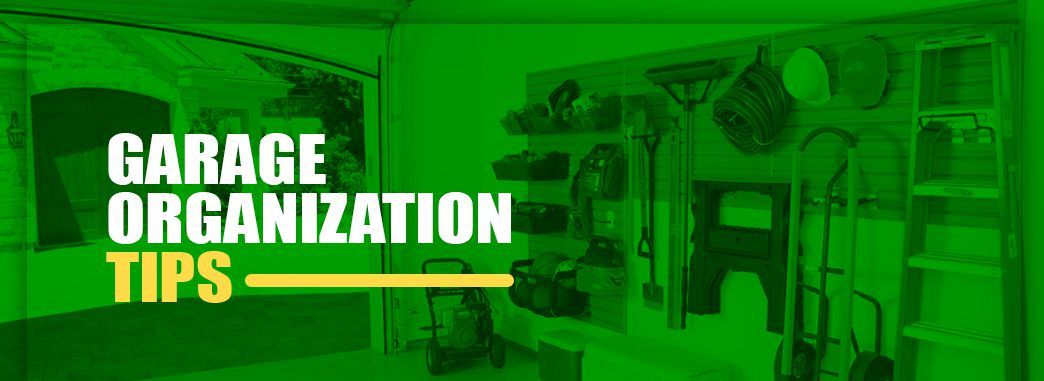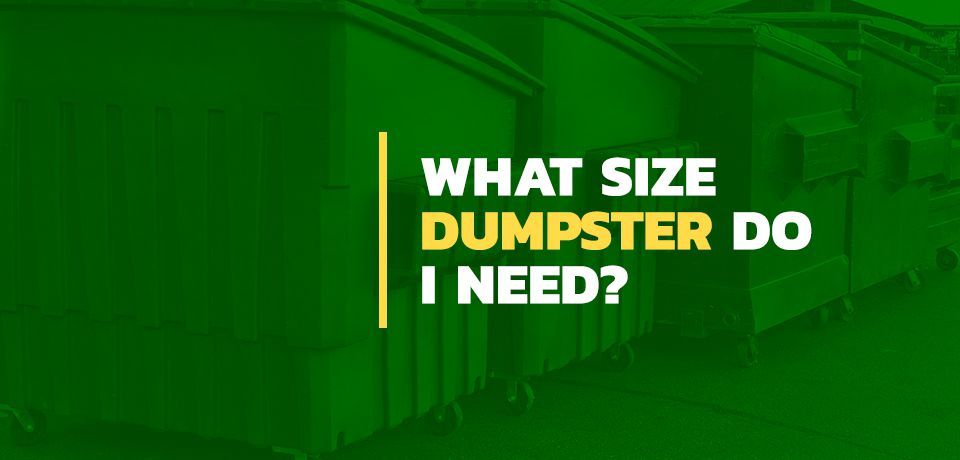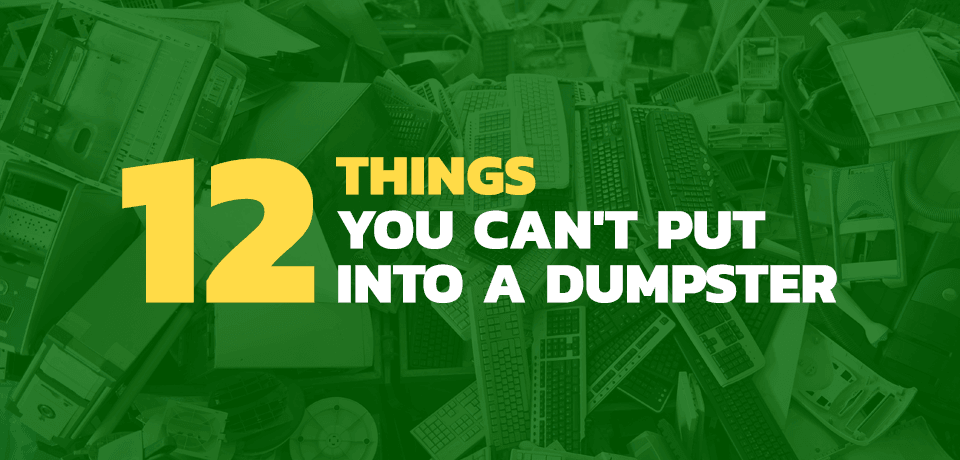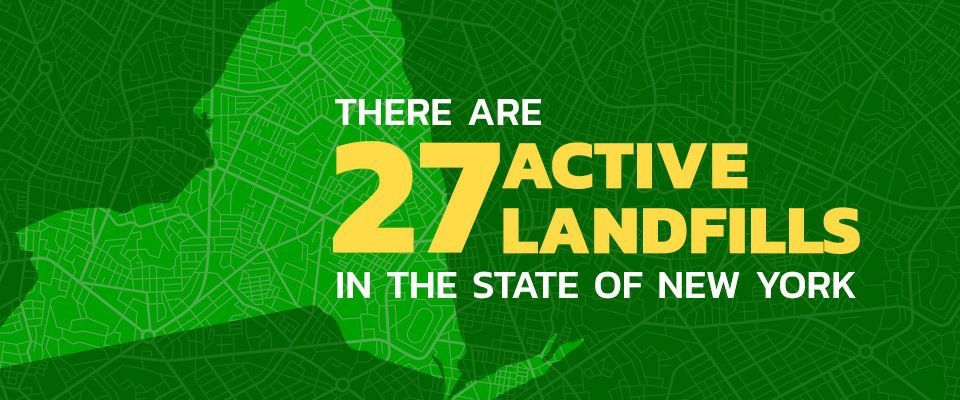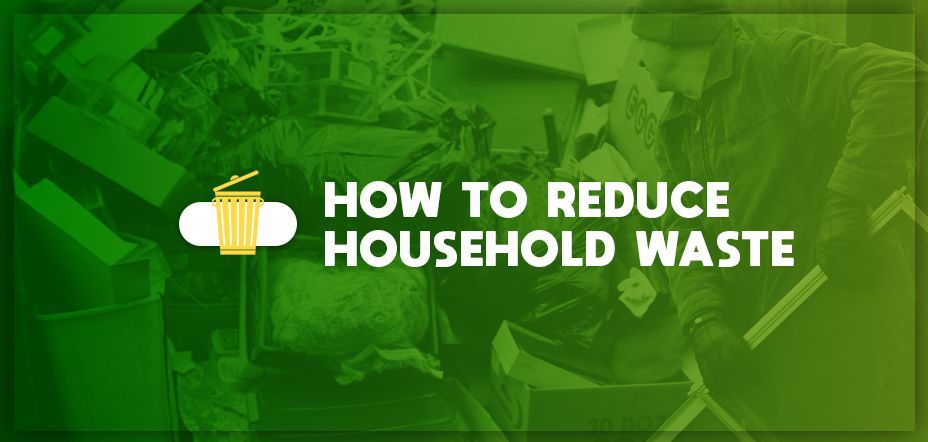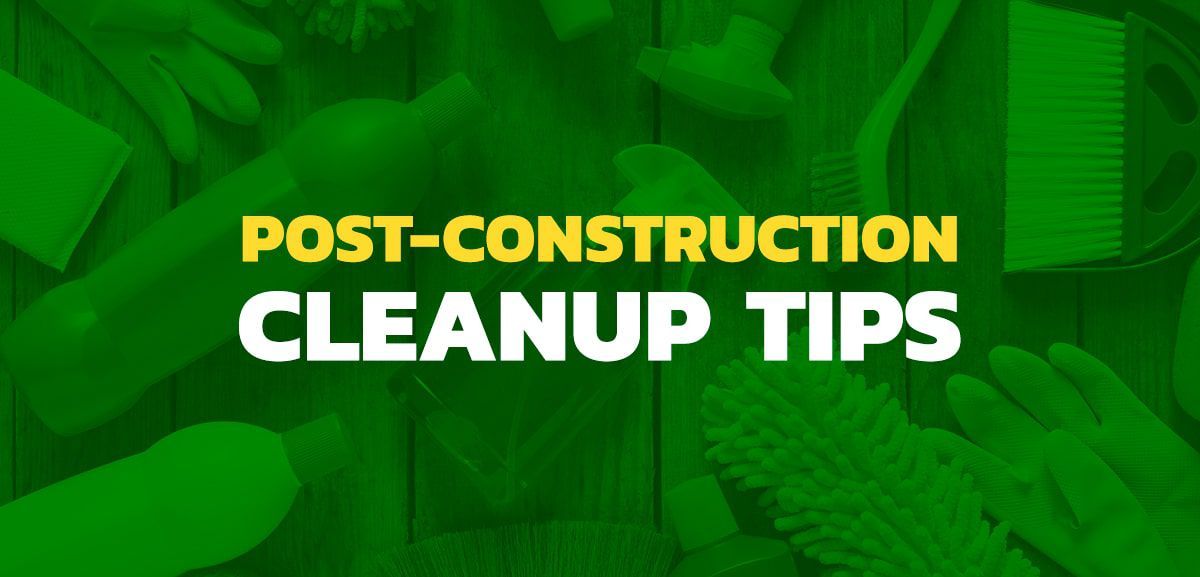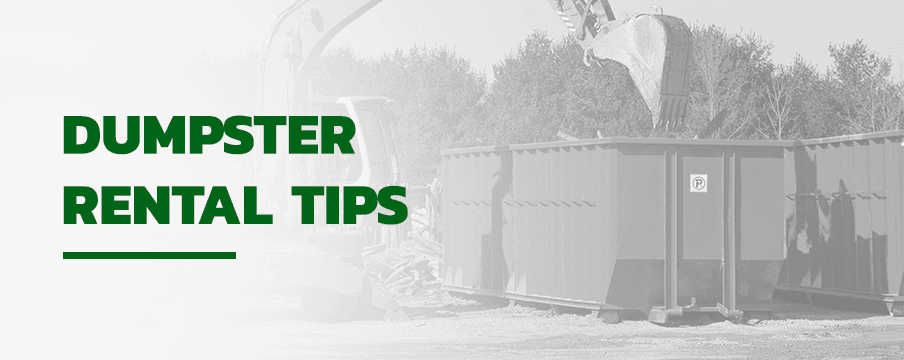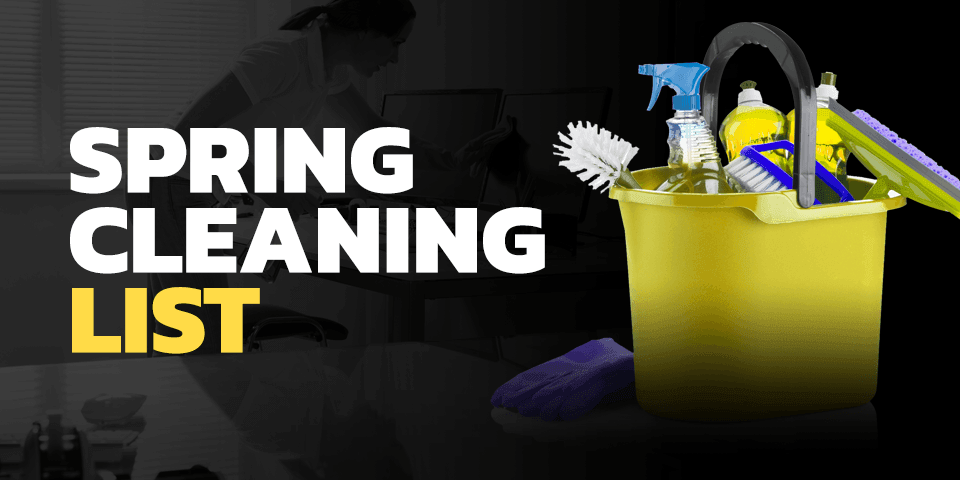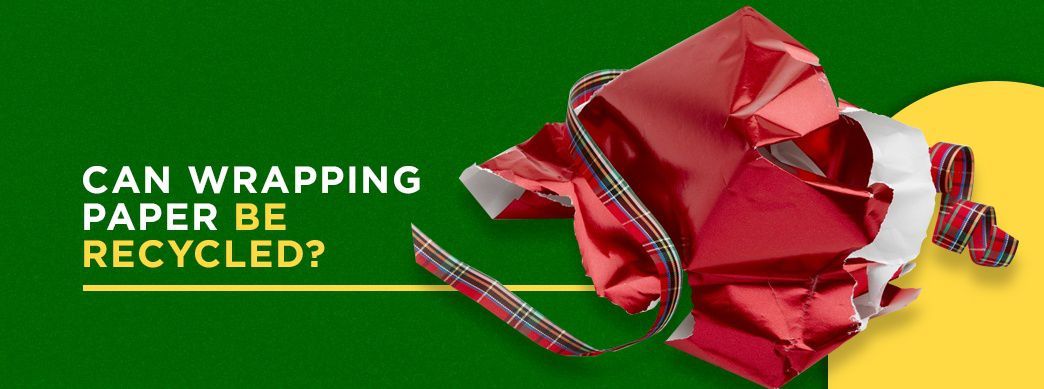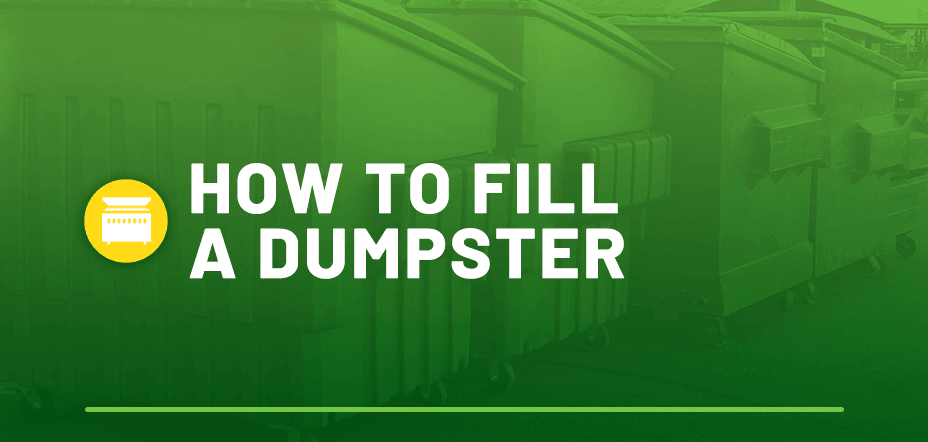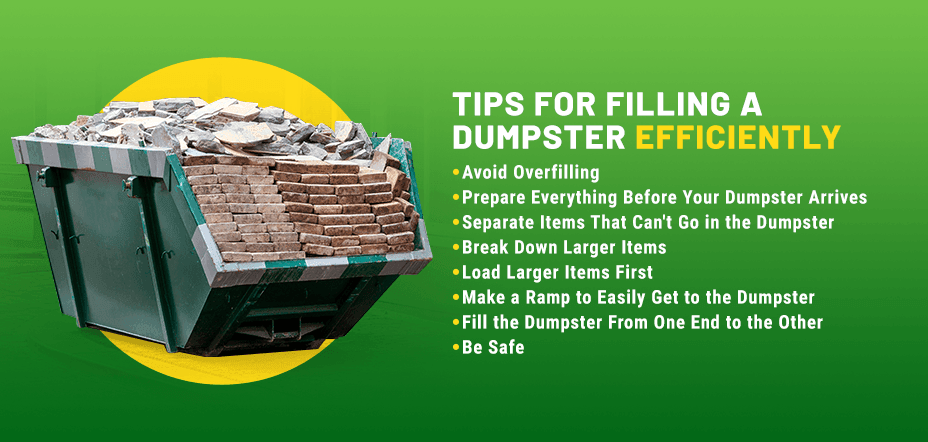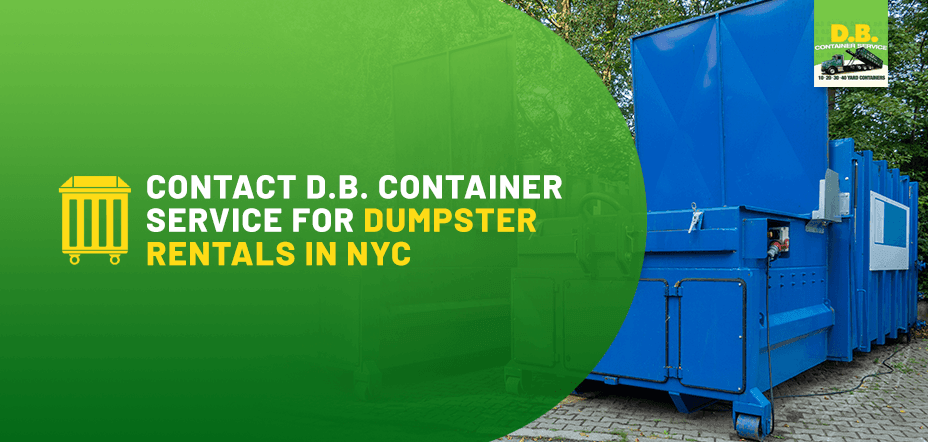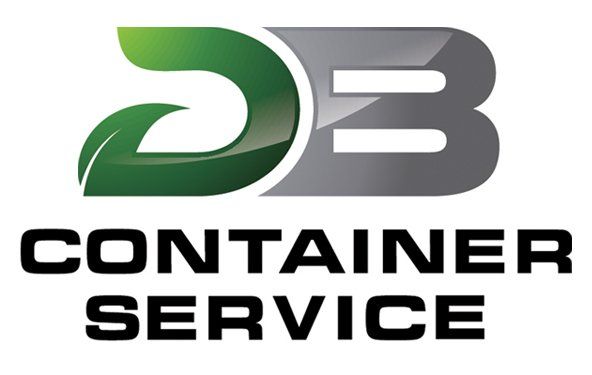How to Fill a Dumpster
Every construction project has one thing in common: waste. Whether you're doing renovations on your home or business, or you're clearing out a basement or another space, there's going to be a lot of trash you have to deal with. There's a high chance you're going to be needing a roll-off dumpster to contain all that garbage — but there is a right and wrong way to fill it.
Renting a dumpster is convenient because the company delivers it and picks it up. All you have to do is fill it. Loading a dumpster correctly can save you time and money, so make sure you know your gameplan before you rent one.
Tips for Filling a Dumpster Efficiently
Efficiently filling a dumpster can become an easy and cost-effective part of your construction project. Here are some tips to help you get the most out of your dumpster.
1. Avoid Overfilling
At first, the dumpster seems like it's bottomless, but soon, you'll be filling it to the brim. Eventually, it becomes a balancing act of stacking trash high above the top of the dumpster. However, this can be dangerous to both you and the employees of your chosen container service.
Trash stacked high can fall and hurt someone. It can also fly out of the dumpster on the road when the company takes it away, causing personal injury and property damage. Make sure to avoid overfilling. If you fill the container properly, you should be able to fit everything without having to make a stack high into the air.
2. Prepare Everything Before Your Dumpster Arrives
To ensure you're ready for the dumpster on the day of delivery, you will want to plan ahead. Set aside enough space for the dumpster, leaving plenty of room for the delivery vehicle to pull in and out. You'll also want to make sure there is enough room around the dumpster for you and your workers to easily load trash. Do what you can to make loading trash one of the easier parts of your construction project.
3. Separate Items That Can't Go in the Dumpster
During the construction process, you'll come across items that you cannot throw away in your rented dumpster. This is because certain items may pose dangers to you, the container company and the environment if you do not dispose of them properly. These items include the following:
- Paints, stains and lacquers
- Hazardous wastes such as freon, gasoline and acids
- Batteries
- Inflated tires
- Appliances
- Explosives
Most of the time, local landfills and other agencies determine what you can and cannot discard in the dumpster. Avoid fines and other potential issues by being conscious of what you're throwing away. Immediately set what can't go in the dumpster aside for proper disposal.
4. Break Down Larger Items
A classic mistake many people make is throwing things away without breaking them down. Consider a cardboard box. If the box remains intact, you may be able to stack them on top of each other, but they take up a lot of room. When the box is crushed, broken or torn apart, it takes up much less space — which means you have more room in the dumpster to accommodate everything you need to throw away.
Break down other items as well, such as long pieces of wood, sections of drywall and furniture. Breaking apart anything that is long or contains empty space can help to make room for more items in your rented dumpster.
5. Load Larger Items First
Some items are too big to hoist up and toss into the dumpster. This can cause serious injury to the loaders. What's the best practice for filling a dumpster when you have large items to dispose of? Many dumpsters have access doors on the front. Swing the doors open and carefully walk in with your large items, setting them down on the floor of the dumpster.
You'll have to do this before throwing away anything else. Otherwise, you risk spilling waste if you attempt to open the access door after you've begun loading the dumpster. Plus, if you try loading a large item with a layer of trash on the bottom of the dumpster, you could trip and fall. Avoid injuries by loading larger items first.
6. Make a Ramp to Easily Get to the Dumpster
A great trick that can increase productivity on your construction site is building a ramp to access the dumpster. Like loading heavy objects, throwing certain items from the ground can increase your risk of injury. Instead, build a sturdy ramp from the ground to the top of the dumpster to give you easier access.
This can increase productivity and safety, too. Being able to see the dumpster from the top allows you place your trash intentionally and where it will fit best.
7. Fill the Dumpster From One End to the Other
One of the most efficient ways to fill a dumpster is by filling it from one end to the other. When you load it this way, you are able to access the door of your dumpster for a longer period of time. This is useful if you need to throw away a large item when you're at a more advanced stage of your construction project.
This is easier to accomplish if you can set up the ramp from the previous tip. You can see over the top edge of the dumpster to make sure you're loading it efficiently. Place items from front to back, and you'll be able to fit more waste than you thought you could.
8. Be Safe
Safety is the most important thing to remember when filling a dumpster. Each tip on this list is only worth it if you can do it in a safe way. It all starts with keeping good safety practices at the forefront of your mind for every step.
Use proper lifting techniques to avoid injury, such as lifting with your legs rather than your back. Lift heavy objects with two or more people. Wear the proper safety gear to keep yourself safe from sharp, dusty or dangerous materials. And remember to never climb into the dumpster when it is full!
Contact D.B. Container Service for Dumpster Rentals in NYC
Dumpsters are crucial throughout the entire construction process. When you're making that much waste, you need to be intentional about where and how you're disposing of it. If you're doing a construction project in the New York City area, choose D.B. Container Service for your job site's dumpster.
We rent residential dumpsters, as well as dumpsters for contractors and dumpsters for businesses. We offer dumpsters in lengths of 10, 15, 20 and 30 yards. With so many options, you're sure to find a size for your unique situation. Contact us online today or call us at 718-257-2300.
Sources:
https://www.hometowndumpsterrental.com/blog/what-can-and-cant-be-put-in-the-dumpster
https://eagledumpsterrental.com/how-to-load-a-rental-dumpster-correctly-the-best-tips-and-tricks/#
https://info.junk-king.com/5-tips-to-efficiently-load-a-cheap-dumpster-rental
https://www.affordablerolloffs.com/ten-tips-on-how-to-load-a-roll-off-dumpster/
https://www.dbcontainers.com/blog/post/how-to-fill-a-dumpster
https://www.dbcontainers.com/contact-us
https://www.dbcontainers.com/for-residential
